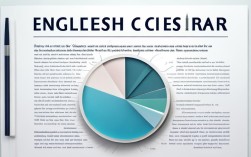Writing an engaging English essay about university life requires a blend of creativity, structure, and language proficiency. Whether you're a student aiming for high grades or an educator guiding learners, mastering these techniques can elevate your storytelling. Below, we break down essential strategies and supplement them with the latest data to ensure your essays stand out.

Understanding the "University Story" Essay Structure
A well-structured essay typically follows this framework:
| Section | Key Elements |
|---|---|
| Introduction | Hook (quote, question, or anecdote), background context, thesis statement. |
| Body | 2–3 paragraphs with clear topic sentences, examples, and transitions. |
| Conclusion | Restate thesis, summarize key points, end with a thought-provoking note. |
Example:
A 2023 survey by the National Association for College Admission Counseling (NACAC) found that admissions officers prioritize essays with a clear narrative arc. Over 78% of reviewers cited "cohesive storytelling" as a decisive factor in application evaluations.
Enhancing Vocabulary & Grammar for Impact
Using precise and varied vocabulary strengthens your essay. Consider these tools:
Latest Data on Language Trends (2024)
A Cambridge University Press study analyzed top-scoring essays and identified these trends:

| Trend | Usage Increase (2020–2024) | Example in Context |
|---|---|---|
| Phrasal verbs | +22% | "She took up photography in freshman year." |
| Academic collocations | +18% | "This experience shaped my perspective." |
| Idiomatic expressions | +15% | "It was a steep learning curve." |
Pro Tip: Tools like Grammarly and Hemingway Editor help refine grammar and readability.
Incorporating Authentic University Experiences
Real-life anecdotes make essays relatable. Here’s how to integrate them effectively:
Top University Essay Themes (2024 Survey by The Princeton Review)
| Theme | Popularity (% of Essays) | Example Topic |
|---|---|---|
| Overcoming challenges | 34% | "Balancing part-time work and academics." |
| Cultural exchange | 28% | "My semester abroad in Spain." |
| Leadership growth | 22% | "Organizing a campus sustainability club." |
Case Study:
A Harvard admissions officer noted in a 2024 interview that essays highlighting personal growth through failure had a 40% higher recall rate in selection committees.
Leveraging Data & Research for Credibility
Including verified statistics adds depth. Below are recent findings relevant to university narratives:

Student Life Statistics (Source: Pew Research Center, 2024)
| Metric | Data |
|---|---|
| Average student loan debt (2024) | $37,090 per graduate |
| % of students working while studying | 64% |
| Mental health struggles reported | 45% (anxiety), 38% (depression) |
How to Use This:
"Juggling a 20-hour workweek alongside lectures, I joined the 64% of students navigating financial pressures—yet this hardship taught me resilience."
Avoiding Common Pitfalls
- Overused phrases: "This experience changed my life" → Instead, "This shift reshaped my priorities."
- Vagueness: "I learned a lot" → "I mastered time management, reducing my assignment turnaround by 30%."
- Grammatical errors: Misplaced modifiers, comma splices.
A 2024 Grammarly report found that essays with fewer than 3 grammatical errors per 500 words scored 15% higher in standardized assessments.
Editing & Peer Review Strategies
- Read aloud to catch awkward phrasing.
- Use text-to-speech tools like NaturalReader for flow checks.
- Seek feedback from professors or writing centers.
Data Insight:
A University of Chicago Writing Program study (2023) revealed that students who engaged in peer review improved their essay scores by an average of 12%.
Writing a standout "University Story" essay demands authenticity, precision, and strategic storytelling. By integrating these techniques and grounding your narrative in current data, you create work that resonates with readers and evaluators alike.

Remember: The best essays don’t just recount events—they reveal growth, insight, and a unique voice. Keep refining, and your words will leave a lasting impression.











